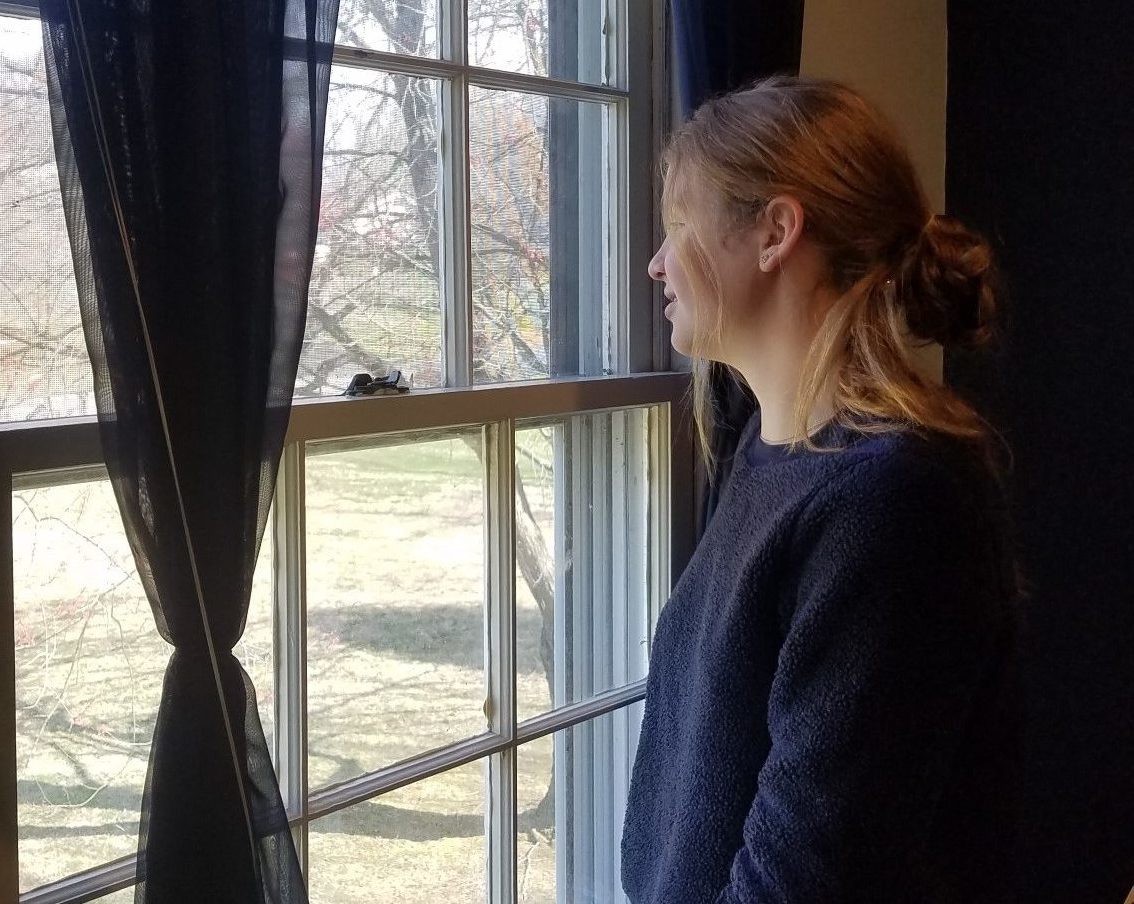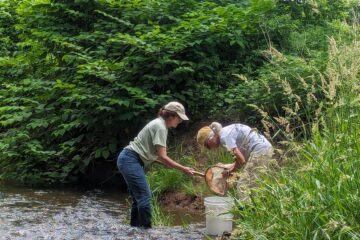 An activity that helps kids and adults explore the natural world together by bringing the outside world in. Created by Debbie Newcomb, RHA Educator
An activity that helps kids and adults explore the natural world together by bringing the outside world in. Created by Debbie Newcomb, RHA Educator
Level: All ages
Lesson Duration: 30 minutes or more (can be done every day!)
Setting: A window in your home where you can relax and appreciate the outdoors
Materials (optional)
- A comfy cushion or pillow
- A nature notebook or journal (see RHA natural journaling 101 activity to create your own)
- Pen/pencil/colored pencils
- Field guide(s)
- Binoculars (or see RHA lesson on how to create your own)
- Telescope for nighttime viewing if available
- A digital camera with telephoto lens if available
- Bird feeder with seed (or see RHA lesson to create your own)
- Indoor native plants or seeds to plant an indoor garden
Background Information: On rainy days when you are unable to get outside, inspire yourself to do some outdoor viewing from the comfort of your living room, bedroom, kitchen or other cozy nook where there are limited distractions. Spend time focusing on the great outdoors and take a break from daily assignments and indoor tasks.
Objective: To develop an appreciation for nature from the comfort of your own home.
The Activity:
- Find a window or viewing area that will help promote relaxation. Make it comfortable by pulling up a chair, couch cushion or pillow.
- While gazing out the window, take time to listen and make observations. What sort of critters do you scurrying about outside? What do you think they are doing? Observe their behaviors. Take a closer look at their physical characteristics. How have they adapted to the outside world? How do they protect themselves? What are they feeding on? Record your observations and discuss how you think these critters interact with each other and their surroundings.
- Cloudspotting is an activity that involves the observation of clouds. What types of clouds are there? Consider the differences between cloud types and what
 they can tell you about the weather outside. Is it a sunny day, a windy day or is it going to storm? Record your observations and local weather conditions and come back the next day to compare your observations.
they can tell you about the weather outside. Is it a sunny day, a windy day or is it going to storm? Record your observations and local weather conditions and come back the next day to compare your observations. - Set out a bird feeder (or make one of your own – see RHA lesson) in an area where birds will be protected from predators and you can watch from your viewing area. Spend time observing the birds that come to your feeder. What adaptations do they have that enable them to feed at a feeder? Listen to their calls and try to interpret them. Why do you think they are calling? Keep a list of the species you observe each day. Draw a few in your nature journal.
- Observe stars from your window in the evening or early morning. Locate constellations. Draw them in your nature journal. Look them up to learn more about them.
- From the comfort of your home, you can also start an indoor garden. Mail away for seeds if you don’t have any of your own – request native plants if possible. Enjoy this activity together and observe how the plants grow each week.
- Be creative and discover new ways that you can continue to learn about nature every day.
- Most importantly, have fun exploring nature (from the inside) together!
How did you like this activity? Please share any questions, comments, or photos that you and your child have on the Raritan Headwaters Learning Community Facebook Page!
More Raritan Headwaters Learning Resources



